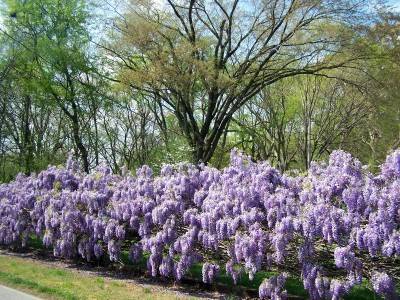Wisteria
Wisteria is an ornamental vine with fruit characteristic of the Legume Family (Fabaceae). Growth of the wisteria vine is limited to the height of the plant that it climbs, often growing more than 65 feet in length. Reaching a diameter of up to 15 inches, Japanese wisteria will twine clockwise around its host while Chinese wisteria will twine counter-clockwise. The stem of Japanese wisteria is white in comparison to the dark gray bark of Chinese wisteria. Its leaves are pinnately compound, 4 to 16 inches long arranged alternately on stems, containing 13 to 19 leaflets. Leaflets are ovate in shape with wavy margins. Flowers of wisteria are borne on 4 to 20 inch long racemes that hang when leaves are newly emerged. Japanese wisteria flowers typically flower from the base to the tip of the raceme and are lavender in color. Flowering in Florida occurs in April and May. Velvety brown seedpods are produced after flowering. The pods are 4 to 6 inches long and the seed are poisonous. Wisteria prefers full sun and well-drained soils, but will grow in less than desirable conditions. It is mainly found growing along roadsides, forest edges, and rights-of-ways. |
|
 |

